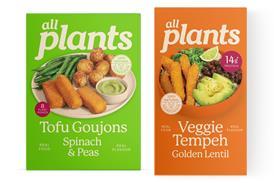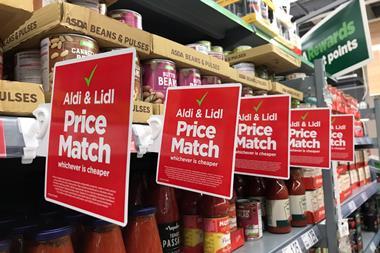Determination paid off for Lidl when it won planning permission to redevelop a site on Eltham High Street in south east London. It was not the first time it had tried: its first attempt was unsuccessful as it was felt the plans would lead to an underdevelopment of this prime location.
The new and improved plans from Lidl include 11,000 sq ft of sales area with office space above the store. The new development has been welcomed by local MPs, as the site had been vacant for four years. However, not everyone will be happy to see Lidl open.
Examining the local area, Lidl’s immediate main competition will come from the 28,000 sq ft Sainsbury store close by. As far as predicted market shares in the catchment go, CACI suggests Sainsbury will dominate, with a market share of about 48%. CACI predicts Asda also probably will take a high market share of about 23%.
Competing against the bigger grocers, the Lidl store may only take a market share of around 5%. Despite this apparently small share, Lidl should still successfully take a significant amount of grocery expenditure from the local market. CACI predicts that Sainsbury may feel an impact of around £35,000 a week from this new Lidl and a further £15,000 a week should come from Asda, Tesco and Safeway/Morrisons. It should also be noted that there could be a high level of cannibalisation from other Lidls close by. Despite the dominance of the larger grocers, Lidl will still need to seek out its traditional customers to make this store a success.
The demographic profile for the Eltham catchment is dominated by three ACORN groups. These groups are focused around families: secure families, post-industrial families and struggling families. Out of these groups it is Tesco and Sainsbury that make the most of attracting the secure families. The post-industrial families may have a slight preference for Sainsbury but will still be prepared to do their main shop in Lidl. Lidl’s most dominant ACORN group is the struggling families, of which there are plenty in the Eltham catchment. It is possibly this group that has attracted Lidl to this site.
Examining which grocer has the best match to the Eltham catchment, CACI suggests Waitrose and Aldi statistically have the best fit.
The catchment is very polarised, which provides a market with plenty of room for grocers with an offer to both affluent and lower income households. This suggests that Lidl and Sainsbury should be able to trade alongside each other, as they’ve each got their traditional group of customers to target in the catchment.
The new and improved plans from Lidl include 11,000 sq ft of sales area with office space above the store. The new development has been welcomed by local MPs, as the site had been vacant for four years. However, not everyone will be happy to see Lidl open.
Examining the local area, Lidl’s immediate main competition will come from the 28,000 sq ft Sainsbury store close by. As far as predicted market shares in the catchment go, CACI suggests Sainsbury will dominate, with a market share of about 48%. CACI predicts Asda also probably will take a high market share of about 23%.
Competing against the bigger grocers, the Lidl store may only take a market share of around 5%. Despite this apparently small share, Lidl should still successfully take a significant amount of grocery expenditure from the local market. CACI predicts that Sainsbury may feel an impact of around £35,000 a week from this new Lidl and a further £15,000 a week should come from Asda, Tesco and Safeway/Morrisons. It should also be noted that there could be a high level of cannibalisation from other Lidls close by. Despite the dominance of the larger grocers, Lidl will still need to seek out its traditional customers to make this store a success.
The demographic profile for the Eltham catchment is dominated by three ACORN groups. These groups are focused around families: secure families, post-industrial families and struggling families. Out of these groups it is Tesco and Sainsbury that make the most of attracting the secure families. The post-industrial families may have a slight preference for Sainsbury but will still be prepared to do their main shop in Lidl. Lidl’s most dominant ACORN group is the struggling families, of which there are plenty in the Eltham catchment. It is possibly this group that has attracted Lidl to this site.
Examining which grocer has the best match to the Eltham catchment, CACI suggests Waitrose and Aldi statistically have the best fit.
The catchment is very polarised, which provides a market with plenty of room for grocers with an offer to both affluent and lower income households. This suggests that Lidl and Sainsbury should be able to trade alongside each other, as they’ve each got their traditional group of customers to target in the catchment.



















No comments yet